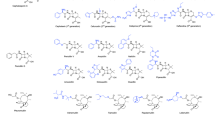Abstract
Maintaining Australia’s status as a major food exporter requires ongoing protection of its cropping industries from exotic pests and diseases. The number of pests classified as high priority threats to Australia’s plant industries now stands at over 300 (Plant Health Australia Annual Report 2014). It is often stated that Australia’s geographic isolation provides a natural barrier from many exotic pests that could damage plant production industries and the unique natural environment. Isolation, however, is not enough given that pests can enter through natural means or by being brought into the country with the increasing movements of people and goods. In an increasingly globalised world economy, Australia relies on a rigorous biosecurity system operated in partnership between governments and industry to mitigate risks from exotic pests. Steadily increasing trade volumes and passenger travel, global movements of serious pests, particularly into neighbouring countries, and the emergence of new and variant species of pests, will continue to test already stretched biosecurity capabilities. Plant Health Australia (PHA) provides the centrepiece of a unique system that manages the national preparedness and response for exotic plant pest incursions in Australia. PHA is a public company that facilitates decision making and funding for effective responses to emergency plant pests. PHA also independently advocates and adds value to, Australia’s national biosecurity system. Utilising the Emergency Plant Pest Response Deed (EPPRD), a legal agreement that brings together governments and industries in formal response arrangements, PHA ensures that national incursion responses are timely, science based, transparent and effective, with the aim of maintaining supply of quality clean food.

Similar content being viewed by others
References
ABARES (2013). Agricultural Commodity Statistics, 2013.
Australian Bureau of Statistics (ABS), Year Book Australia 2012.
Baxter, J., Hayes, A., & Gray, M. (2011). Families in regional, rural and remote Australia. March: Australian Institute of Family Studies.
Bureau of Infrastructure, Transport and Regional Economics (BITRE), 2006. Airline issue no 8, June 2006. Canberra, ACT.
Bureau of Infrastructure, Transport and Regional Economics (BITRE). 2013. Yearbook 2013: Australian infrastructure statistics. Statistical Report, Canberra, ACT.
Nairn, M. E., Allen, P. G., Inglis, A. R., & Tanner, C. (1996). Australian quarantine: a shared responsibility. Department of primary industries and energy. ACT: Canberra.
Plant Health Australia Annual Report (2014). Plant Health Australia. ACT: Canberra.
Acknowledgments
This paper was presented at a conference sponsored by the OECD’s Co-operative Research Programme on Biological Resource Management for Sustainable Agricultural Systems whose financial support made it possible for most of the invited speakers to participate. The opinions expressed and arguments employed in this publication are the sole responsibility of the author and do not necessarily reflect those of the OECD or of the governments of its Member countries.
Author information
Authors and Affiliations
Corresponding author
Rights and permissions
About this article
Cite this article
Fraser, G. Biosecurity and food security—effective mechanisms for public-private partnerships. Food Sec. 8, 83–87 (2016). https://doi.org/10.1007/s12571-015-0535-9
Received:
Accepted:
Published:
Issue Date:
DOI: https://doi.org/10.1007/s12571-015-0535-9




